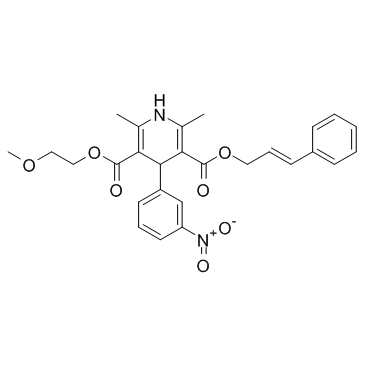Antialbuminuric advantage of cilnidipine compared with L-type calcium channel blockers in type 2 diabetic patients with normoalbuminuria and microalbuminuria.
Shinya Fukumoto, Eiji Ishimura, Koka Motoyama, Tomoaki Morioka, Eiji Kimoto, Ken Wakikawa, Shigeichi Shoji, Hidenori Koyama, Tetsuo Shoji, Masanori Emoto, Yoshiki Nishizawa, Masaaki Inaba
文献索引:Diabetes Res. Clin. Pract. 97(1) , 91-8, (2012)
全文:HTML全文
摘要
We evaluated the antialbuminuric advantage of cilnidipine, an N/L-type calcium channel blocker (CCB), compared with L-type CCBs in diabetic patients with normoalbuminuria and microalbuminuria. The study was a multicenter, non-randomized crossover trial. Participants were 90 type 2 diabetic patients exhibiting either normo- or microalbuminuria, and undergoing CCB treatment for ≥6 months prior to study entry. The CCB at the time of entry was continued for the first 6 months (Period 1). Treatment was subsequently switched from cilnidipine to an L-type CCB, or vice versa, for the second 6-month observation period (Period 2). During Period 1, the L-type CCB group showed a significant increase of urinary albumin excretion (UAE) over time, while the cilnidipine group showed no significant elevation. During Period 2, switching of the treatment from the L-type CCB to cilnidipine resulted in significant reduction of the UAE, whereas switching from cilnidipine to the L-type CCB resulted in no significant change in the UAE. This study demonstrated that the antialbuminuric effect of Cilnidipine, but not the L-type CCBs, was sustained even in patients treated for a long time. In addition, the antialbuminuric effect can be anticipated after switching from an L-type CCB to cilnidipine, but not vice versa.Copyright © 2012 Elsevier Ireland Ltd. All rights reserved.
相关化合物
| 结构式 | 名称/CAS号 | 分子式 | 全部文献 |
|---|---|---|---|
 |
西尼地平
CAS:132203-70-4 |
C27H28N2O7 |
|
Preparation, characterization and tableting of cilnidipine s...
2013-05-01 [Pak. J. Pharm. Sci. 26(3) , 629-36, (2013)] |
|
The glucocorticoid mometasone furoate is a novel FXR ligand ...
2015-01-01 [Sci. Rep. 5 , 14086, (2015)] |
|
Effects of cilnidipine on sympathetic outflow and sympatheti...
2013-07-10 [Life Sci. 92(24-26) , 1202-7, (2013)] |
|
Additive effects of cilnidipine and angiotensin II receptor ...
2013-02-01 [Clin. Exp. Nephrol. 17(1) , 41-50, (2013)] |
|
Renoprotective and antioxidant effects of cilnidipine in hyp...
2012-11-01 [Hypertens. Res. 35(11) , 1058-62, (2012)] |